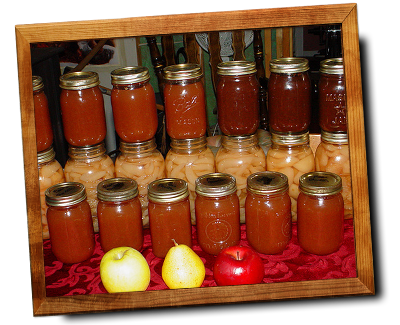
Canning your own food will save you money!

Some rights reserved by Counselman Collection
In 2009, there was an article in Time Magazine entitled, “What Sells During a Recession: Canned food Goods and Condoms.” Our interest here is in canning, but I thought the article was worth mentioning because it pointed to the popularity of non-perishable food during the beginning of the most recent recession, with a rise in the purchase of these items and a drop in other kinds of goods.
Why have people been interested in canned foods during the recession? Canned foods are popular during times of recession because they are economical. One major way in which canned foods are economical is they can last up to nine years on the shelf without spoiling. Interestingly, innovations in canning have come about due to the need of various governments to provide food to soldiers, wherever they are, during times of war. Napoleon offered a reward to anyone who could figure out how to prevent food from spoiling before it reached soldiers in far off lands during the Napoleonic Wars. During WWI, governments sought ways to increase the variety of foods consumed by the military in order to boost nutrition and morale- canning alone could make this possible.
While any canned food is economical because of its long shelf life and eliminating trips to the grocery store every day, there are additional economic benefits to canning at home. Canning food oneself eliminates waste. If you are considering canning food from store-bought produce, you are saving money because fresh produce can go to waste quickly. If you have a source for fresh fruits or vegetables, you can save even more money by canning yourself. Canned goods often cost between one and three dollars per can at the store. That can really add up. If you choose to can foods yourself, you can also choose to grow fruits and vegetables organically. If you prefer to buy organic foods, canning will increase your savings as these canned items cost more than conventionally grown foods.
If you would like to save money on groceries by canning food, you might be concerned that the set-up costs will prevent you from enjoying the economic benefits of canning. If you begin by purchasing everything you need at retail stores, it could take a while until you recoup these funds. If you stick with it, you will save money even if you do purchase everything during peak canning season.
Try shopping online for low prices on rings and lids. You can sometimes find canning supplies in surprising places, such as charity shops or jumble sales. I personally witnessed someone leaving a jumble sale last year with bags of canning rings and lids in various sizes! Make sure that any used items you might find are thoroughly cleaned and sanitized before the canning process. You can reuse jars as well.
Here is an estimate of the starting costs of canning:
A canning guide – $.99- $20
Jars- $.99-1.50 each
Lids and rings- $3 for 12
Pressure cooker-$60-$100 (must use for safely canning vegetables, meat, poultry and dairy)
Large pot with rack-$5-$35 (safe method for fruits and pickled vegetables)
Jar lifter $2-$5
Thermometer $4-$7
Colorodo State University offers a template to calculate your exact canning costs and savings.


